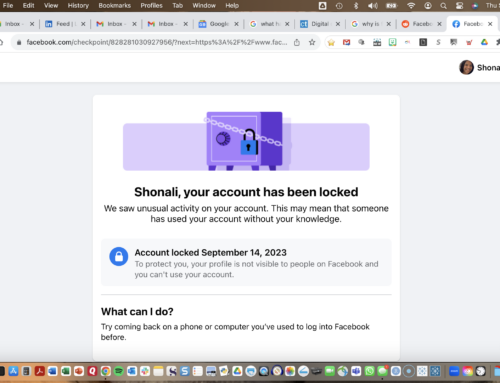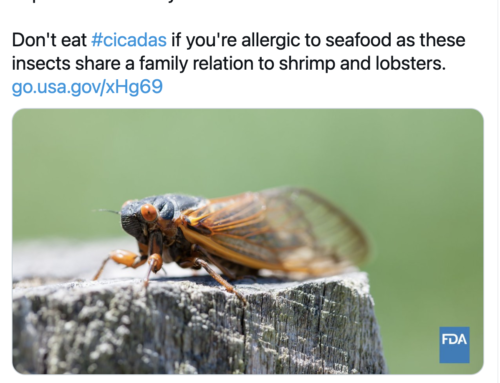 It was about a year ago that my husband’s family (and therefore mine) went through the traumatic experience of learning that one of the uncles tragically passed away very suddenly while on vacation abroad.
It was about a year ago that my husband’s family (and therefore mine) went through the traumatic experience of learning that one of the uncles tragically passed away very suddenly while on vacation abroad.
Dealing with death is never fun.
While the family started coming to terms with their loss, I tried to put my PR background to good use: to find our late uncle’s “orphaned” dog, Darby, a home, using social media.
If you’re just tuning in to the Darby saga, you can catch up on my posts from last year here, here, here, here and here.
One year later, our uncle and his affairs are at rest, and Darby did indeed find a new home. Certainly this was huge for me on a personal level.
On a broader level, though, this entire experience does have some good takeaways (and some reinforcement) that I wanted to share:
1. Social media can be incredibly powerful.
If I hadn’t been blogging and tweeting, and asking others to do so, Megan Drake would never have picked it up for her column, and KOIN-TV wouldn’t have seen Megan’s story and brought Darby into Portland’s homes.
2. Traditional media is far from irrelevant in the 21st century.
No matter how many people were tweeting and re-tweeting about Darby, a traditional TV newscast was the catalyst we needed. If you read my first post on Darby, you’ll remember that was one of things I was hoping for.
3. Online communities can be extremely effective, even if they’re made up of IRL “strangers.” Some of Darby’s most avid fans on Twitter were people I’d never met. It didn’t matter. They cared about her fate, so they acted. The secret is to give them something to care about.
4. If you give people the tools to work with, and ask them to do something, they will.
I could have written my blog, tweeted about Darby and left it at that. I didn’t; I asked everyone I knew to re-tweet, forward emails, joined every relevant online group I could think of (and was even made the owner of one, which threw me a little!) and kept asking people to spread the word. Most importantly, there was a central location – this blog – for folks to get information from and get in touch with me.
5. There’s no substitute for elbow grease.
Yes, SM allows us to communicate instantly. Yes, we have the potential to reach millions of people with a single click. But we still have to write, to call, to reach out and follow up for it to result in something. At least “ordinary people” like us do; and the Seth Godins of the world had to at some point as well (which is how they became the Seth Godins of the world).
What would I have done differently?
Hindsight, as they say, is 20-20. For the most part, I don’t have any regrets about what I did or how I did it. The only question I ask myself is:
Should I have started blogging Darby’s plight earlier?
If you look at the timeline of the Darby posts, the first one ran on May 11, 2009. This was about two weeks after we first heard the news. At the time, I spent the first few days figuring out what paperwork needed to be done in order for me to move ahead with getting Darby adopted, and making/sending a ton of calls and emails.
I don’t regret how I spent this time in the slightest – it was very important that we have our ducks in a row – but I also waited to see whether a few promising leads would work out. They didn’t, which started putting me into panic mode. And that’s when I started blogging, tweeting (including setting up Darby with her own Twitter account), etc.
You could say that this particular rear view mirror is pointless; we found Darby a home and that, at the end of the day, is what mattered. However, if we’d started this cycle of information even a few days earlier, it may have saved us not just time and money, but Darby’s state of mind, which was deteriorating by the day. Fortunately she made it… but what if she hadn’t?
The bottom line
A year later, and even though I have had no contact with her or her new family post-adoption (and believe me, I’ve tried), Darby still reminds me of what powers public relations.
It’s people.
At the end of the day, regardless of whether you’re in B2B or B2C communication (or any other acronym you want to add to the list), you’re dealing with issues, products, services, whatever – that all affect people.
So you must find a way to make what you’re trying to say (your “messages”) relevant to those people (i.e. your “audiences” or “publics”), in order for them to take the actions that will, hopefully, result in you achieving your desired outcomes. You have to do so cohesively and in a timely fashion.
You have to be consistent… and you have to keep going. If a particular tactic isn’t working, you have to try another. And you can only do that if you’re keeping track of your progress. Which means you have to have measurable objectives in mind, which should inform your communications. Which are by, to, for, and of… people.
Funny how public relations works, isn’t it?
Photo of Darby by the brilliant and talented Susan Ragan, used with permission.



![[EVENT]: PR Hacks for Small Biz (online)](https://shonaliburke.com/wp-content/uploads/2021/06/FB-Ad-1200x800-01-01-01-Copy-500x383.jpeg)





[…] My social networks didn’t help me save the world today, or save a dog. […]
What an incredible story and life lesson Shonali…thanks so much for penning and sharing with us. Here’s to Darby! :) Andy
I really appreciate you reading it, Andy, especially so long after the fact. Thank you!
Social comments and analytics for this post…
This post was mentioned on Twitter by shonali: New post remembering @darbytheGSD’s plight: What Darby Taught Me About PR” http://ow.ly/1BbM0 Chime in? fyi @meanrachel @jenzings @Turbodean…
Thank you all! Funny how Darby’s situation was the catalyst for introducing me to many of you (Jeff, you’re the exception, you helped me get this blog started!). I’m definitely the better for it. I guess it’s a case of a dog teaching humans new tricks? ;-)
Wow! Time flies. I believe that’s when we “met” on Twitter as well or close to it. The tools social media offers are wonderful, especially when used in a positive manner by professionals.
Thanks for all you’ve done to raise the bar in that regard over the past year. Looking forward to more bar raising!
Great post, Shonali. I can’t believe it’s already been a year.
There’s certainly a lot to be learned from our pets (I recently did a presentation at a social media gathering called “Why Your Pet is a Social Media Expert”). One thing I learned from getting involved in your quest to find Darby a home was that, when it comes to our pets, there will always be an outpouring of support and help. This emotion crosses over borders and through computer screens, and reaches in to peoples’ hearts. From a PR/social media standpoint, there’s no better way to connect with others than through that shared emotion.
But–and this is more important, really–from a human standpoint, it’s truly heartwarming to watch it happen.
Thanks for the rundown–it’s a nice, short case study as to how social media can help. I’m not only a dog fan, but a fan of Shepherds (and mixes, like my dog Ralph!).
Sorry to hear that the family hasn’t kept you in the loop–I was really hoping to hear that Darby has adjusted well and is happy. If you do hear anything, please let us know!
Jen
Great post Shonali. It caught my eye immediately because I’m a huge dog fan (and of course because I like to read your stuff ;-)
Spot on summary of the power and potential of social AND traditional media, combined with good old fashioned persistence.
[…] This post was mentioned on Twitter by Shonali Burke. Shonali Burke said: New post remembering @darbytheGSD's plight: What Darby Taught Me About PR" http://ow.ly/1BbM0 Chime in? fyi @meanrachel @jenzings @Turbodean […]